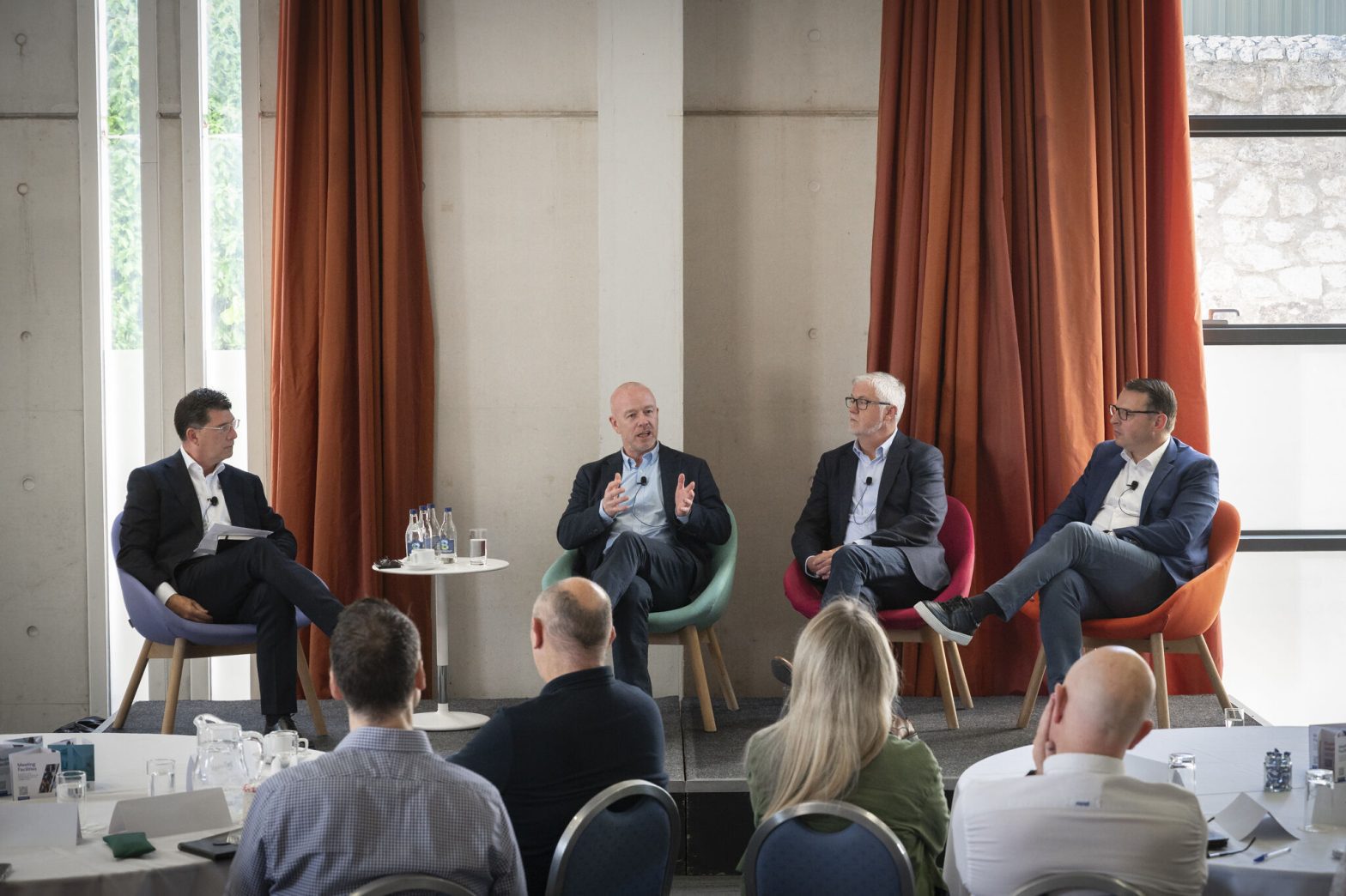Event Insights: Strategic Thinking: Dead? Or Just Not Executed?
By IMI | 30th October 2024
In a world characterised by rapid change and unprecedented digital transformation, the role of senior leaders in businesses has never been more critical. The latest IMI Breakfast Briefing held on September 27th, 2023, provided valuable insights into the evolving landscape of business strategy and the challenges faced by organisations striving to stay ahead. We welcomed Gary McCarthy to chair the event, joined by our panel comprising of Dr Stephanie Teichmann, Aidan McCullen, and Garvan Callan.
The Speed of Change
One of the central themes of the Breakfast Briefing was the breakneck speed at which technological platforms gain users. So when we pose the all-important question “Is strategy dead?”, the answer is no, but the shape of strategy has changed. It’s no longer about long-term planning; it’s about readiness for immediate action. The rapid rate of adoption of platforms like Threads and ChatGPT illustrates that people are ready for innovation – while Uber took 70 months to reach 100 million users, Threads met the same milestone within days. The challenge, however, lies in organisations being prepared for this rapid pace of change, including the process of unlearning old habits.
Execution and Alignment
Business Coach and C-Suite Strategic Advisor, Dr Stephanie Teichmann, addressed a critical issue plaguing many organisations – the gap between strategy and execution. She stressed that strategy without execution is a failure. The lack of alignment among key stakeholders often hinders execution. It’s not enough for everyone to agree on a new strategy; true alignment is essential. Additionally, structural, procedural, and budgetary obstacles can stand in the way of successful execution. Companies must prioritise alignment, streamline processes, and allocate budgets wisely to bridge this gap effectively.
Digital vs. Human Transformation
Strategist, Innovator and Transformation Advisor, Garvan Callan highlighted the difference between Industry 4 and Industry 5 – the former representing digital transformation and the latter focusing on human transformation. In the digital age, transformation is complex, involving the internet, mobility, analytics, and cloud computing. To thrive, organisations must be ambidextrous, simultaneously exploiting their core strengths while exploring new avenues. The concept of “stradaptability” is key – strategy is no longer rigid but adaptive. Quarterly recalibration is essential to navigate the complexity of today’s business landscape.
The Power of Storytelling
Storytelling emerged as a vital tool for senior leaders. Crafting a compelling narrative that aligns with your strategy and tailoring it to different audiences is crucial. Whether addressing stakeholders, investors, or the board, the objective remains the same – instilling confidence in your ability to deliver.
Managing Time and Resources
Time is a precious commodity in the world of business strategy. Finding time for strategic thinking amid the demands of the core business is a challenge. The ambidextrous approach can help reclaim resources like time and energy for future-focused initiatives. Resource allocation must shift away from outdated paradigms, focusing on innovation rather than maintaining the status quo.
Avoiding Target Fixation
Target fixation, where organisations become overly focused on a specific strategy, can blind them to changing circumstances. Recognising environmental signals and adapting is crucial. Jack Welch’s insight – “if the rate of change on the outside exceeds the inside, the end is near” – underscores the importance of staying vigilant and responsive to change.
The AI Challenge
The event also highlighted the significant strides in AI technology, with ChatGPT’s ability to transform text into voice. Data literacy and a data-driven culture were emphasised as keys to unlocking AI’s potential. AI’s ability to visualise data enables rapid decision-making, while automation and predictive models offer new possibilities for innovation and creativity.
In a world characterised by constant disruption and digital transformation, senior leaders in businesses must embrace adaptability, alignment, and innovation. The insights from our panel of experts offer a roadmap for senior leaders to navigate this new landscape successfully. By reimagining strategy, embracing change, and harnessing the power of technology, organisations can thrive in this era of unprecedented opportunity.
FAQ
Is strategic planning still relevant in today’s fast-paced business environment?
Yes, strategic planning remains essential, but its execution has evolved. In a landscape characterized by rapid technological advancements, the focus has shifted from long-term planning to immediate readiness and adaptability. Leaders must cultivate strategies that enable quick responses to market changes while fostering a culture of innovation and unlearning outdated practices.
What are the key challenges organizations face in executing their strategies effectively?
Organizations often struggle with the gap between strategy and execution due to misalignment among stakeholders and structural obstacles. For successful execution, it is vital to prioritize alignment, streamline processes, and allocate resources effectively. Addressing these challenges can help bridge the gap and ensure that strategic initiatives translate into actionable results.
How can leaders leverage storytelling to enhance their strategic initiatives?
Storytelling is a powerful tool for leaders to communicate their strategies effectively. Crafting compelling narratives that resonate with diverse audiences—such as stakeholders, investors, and employees—can instill confidence and drive engagement. A well-aligned story enhances understanding and buy-in, ensuring that the strategic vision is clearly articulated and embraced across the organization.



